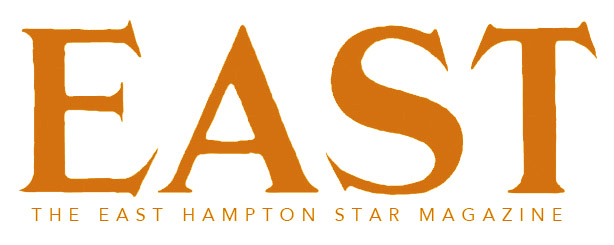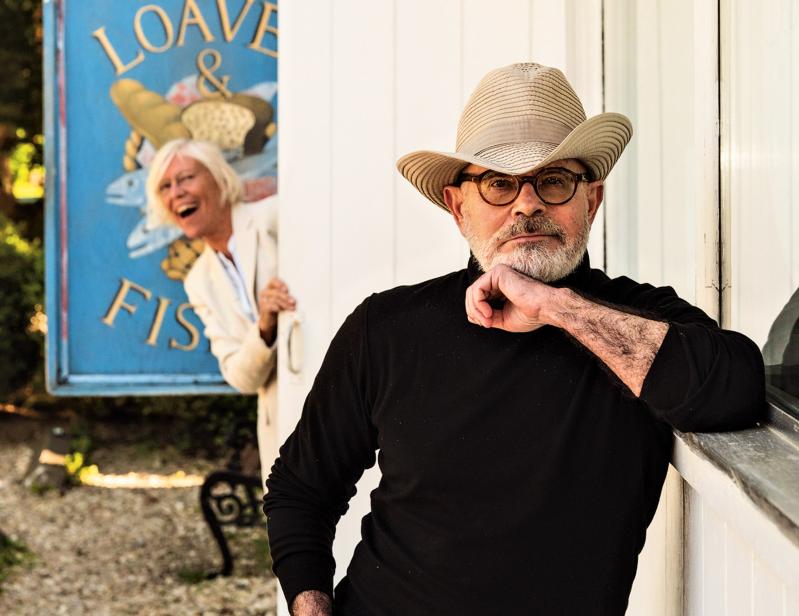Early in the summer of 1973, William “Billy” Norwich, 20 years old and not yet a force in literature and fashion — a writer and reporter who would later, among many professional accomplishments, pen a social column for The New York Daily News, serve as an editor for Vogue, and publish My Mrs. Brown, an iconic novel about couture culture — made his first visit to the East End.
Fatherless from the age of nine, and reeling from the recent passing of his mother, Billy found respite and rejuvenation that initial weekend in Southampton with friends. “It was an enormous contrast to how I felt emotionally,” he says. “It was beautiful here. It was serene. It was kind. It felt like the East End was home, or could be home for me.”
So began Billy’s lasting connection to the South Fork, an affinity for the land and the sea, the people and the places, the quaint and the quiet, as he describes in this Q. and A.
Bring us back to 1973 and your first time on the East End. What do you remember most?
I tagged along with Breck Costin, who grew up summers in East Hampton, and his first wife, the late Serena Van Ingen Costin McCallum. Serena’s best friend, Scarlett Leas Robertson, invited us to stay with her mother, the late Fernanda Wanamaker Leas at her house. It was an impressive brick Georgian place built in 1929. It’s now owned by Tory Burch.
Mrs. Leas’s house was filled with her children and their friends, and it was wonderful. We had free rein but within the ground rules of politesse. Before dinner, a drink at the pool house with Mrs. Leas, wearing an orange-red evening dress by Giorgio di Sant’ Angelo. To my eye, she was more glamorous than any Slim Aarons photograph. I remember asking Mrs. Leas who designed her dress? The kids laughed. The writing was on the privet about me; everyone else was discussing tennis and golf. But Mrs. Leas understood and talked to me about Giorgio di Sant’ Angelo and other designers whose clothes she liked.
My lasting impression, though, was the grandeur of green-perfected gardens near the ocean. The quiet. The few cars. And soon seeing my favorite house, August Moon, a Japanese style one-story place on Heady Creek owned by Margaret and Winston Frost. Their daughter, the artist Dora Frost, would become one of my best friends. Decorated with massive Audubon prints and Harry Hinson blue-and-white spatter prints was this house, built onto the creek so that during high tide one thought one was floating.
And after that experience?
I was fortunate the Frosts took me in and I spent many happy weekends with them before I found my own place in 1985. I rented a cottage year round from a wonderful lady named Abigail Halsey Van Allen. I went almost every weekend, to write and have dinner with friends. There were not as many “events” in the summer back then. There was the fund-raiser for the Parrish Museum, the Southampton Hospital, and the art show at St. John’s Church. Sometimes, I wrote about the Parrish and the Hospital, to help them with promotion. I always attended the St. John’s show. I used to draw caricatures for them to sell. I remember one of the apartment buildings melding into the beach club and St. Andrew’s Dune Church on Gin Lane. I titled it: Park Avenue Ends in Southampton.
But as time passed, I began to see and sense a difference on the East End, particularly after the publicist and event planner Peggy Siegal organized her first screening. Taking over one of the cinemas, inviting the city and national press. This coincided with the opening of many trendy restaurants, starting a shift in social life, from intimate gatherings at houses to public dining. Busy restaurants and valet parking! It was a scene, and I started to make up catch phrases about the East End for my column, including “the Cashamptons.” It felt to me like the bumptious, party-hearty East Village on a Saturday night but with more trees. When my city apartment was more serene and quiet than my weekend retreat, I knew “the Hamptons” had changed.
So what did you do?
I changed. And my circumstances, as I no longer had the cottage. But my partner, the artist Garrett Chingery, lives year round in East Quogue and I have become a full-time resident. I’m happy. I visit friends for walks and meals, but I do not go to events. My idea of an event on the East End is any talk the writer Bob Colacello hosts at the Peter Marino Foundation in Southampton or any art show at the Quogue Library. I like visiting the bookstores, swimming late in the day at Flying Point Road when the sun is soft, and visiting farm stands in search of a sweeter blueberry and ear of corn.
I like Loaves and Fishes because its offerings are delicious, and because it is so laid back in presentation. I like watching the customers, some of the customers, not understanding this simplicity. I think they are expecting something flashy Real Housewives-style marble and chrome and it’s so quaint.
What current projects are you working on?
After eight years commissioning and editing books for the Phaidon Press, I am now just writing my own things and taking on some assignments. Currently, I am finishing a novel, a contemporary murder story, set on the Upper East Side. In September, a beautiful book titled Linda Evangelista Photographed by Steven Meisel, with more than 180 images they shot together since their first shoot in 1987, will be published. This was on the top of the list of books I wanted to do for Phaidon, and I was thrilled when Linda and Steven agreed to do the book and asked me to write the introduction.
Last question. In My Mrs. Brown, the heroine sets out to buy the “perfect dress.” Have you ever pursued perfection on the East End, only to find, like your character, that the journey is more important than the end result?
Oh, sure, along the way I learned a lot. Looking for love, looking for family, looking for everything and anything, even roses that grow when there’s no one around to water them . . . looking for the right and good things but in all the wrong places, sort of thing. This has been the adventure of my lifetime, looking for perfection in people, places, and things only to discover, well, no one said it better than Albert Camus, “In the midst of winter, I found there was, within me, an invincible summer.”
For me, that was always the promise of the East End. Finding the East End light, within. I do see that it is a place where people chase the glitter, but the glitter, as we know, isn’t gold.

